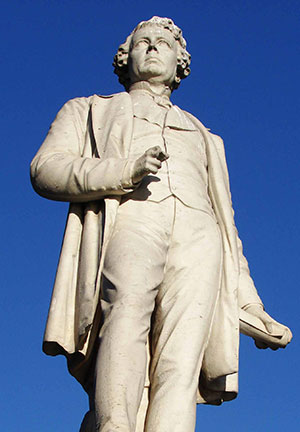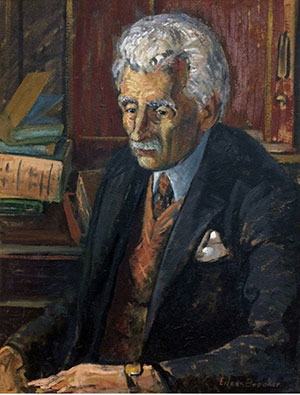Edmund Dwyer Gray Jr in Tasmania
Published in Features, Issue 2 (March/April 2017), Volume 25While many Irishmen were transported to Tasmania, formerly Van Diemen’s Land, either as ordinary criminals or as political offenders during the first half of the nineteenth century, some Irishmen have chosen to settle there. One such was Edmund Dwyer Gray Jr, who rose to be premier of the state of Tasmania for a period of six months in 1939.
By Felix M. Larkin

Above: The statue in O’Connell Street, Dublin, of Sir John Gray, grandfather of Edmund Dwyer Gray Jr.
Departure to Australia, 1894
The Grays lost control of the Freeman in 1892, largely as a result of their inept management of the newspaper during the crisis of the Parnell ‘split’. Edmund Junior, with no prospects in Ireland, went to Australia in 1894, never to return, except on a brief visit in 1898 after his marriage to Clara, daughter of George Rose of Sydney.
In his early years in Australia Gray enjoyed little success: he seems to have dabbled in mining and in farming, but nothing more is known of his activities until he emerges from obscurity as the editor of the Daily Post, the organ of the Labor Party in Tasmania, in 1912. He was then aged 42. He was a leading figure in the Australian labour movement, both as a journalist and as a politician, for the remainder of his life—but a somewhat erratic one, owing to heavy drinking. He was later editor of the World, a daily newspaper that replaced the Daily Post. In 1925 he became editor of a new Labor weekly in Tasmania, the People’s Voice, and he continued to edit the Voice until his death twenty years later in 1945.
In 1928 Gray was elected to the Tasmanian parliament for the Labor Party—having first hyphenated his name in order to gain a higher place on the ballot paper. He became deputy leader of the Labor Party in 1932. When the party came to power in Hobart two years later, he was appointed state treasurer and deputy to premier Albert Ogilvie. Ogilvie died suddenly in 1939, and Gray was the compromise choice to succeed him. This was intended merely as an interim arrangement, and he resigned after six months. He was then reappointed as treasurer under the new premier, Robert Cosgrave.
‘Bringing home the bacon’

Above: The portrait of Edmund Dwyer Gray Jr by Eileen Booker that hangs in Parliament House, Hobart, Tasmania.
Gray retained a keen interest in Irish politics, and as a journalist during the years 1916 to 1922 he stayed faithful to his family’s long-standing moderate nationalist sentiments. His newspapers at that time—the Daily Post and the World—supported the Irish demand for independence and, in the words of Richard Davis, rejected ‘the hysterical fear that support for Irish self-determination would lead to the disintegration of the British Empire and the end of White Australia’. Gray, however, was unwilling to abandon the Irish constitutional nationalist tradition and espouse Sinn Féin. He condemned the Easter Rising in 1916 and argued that the insurgents should have been suppressed earlier; later, during the War of Independence, he made it clear that murders on both sides were equally abhorrent to him. He supported the Anglo-Irish Treaty of 1921, arguing that it should satisfy Irish aspirations, and he opined—somewhat optimistically—that Ulster ‘would soon join the rest of Ireland when she saw how well the new Free State was governed’.
Gray’s success as a politician—albeit in Tasmania—had been forecast by Justin McCarthy MP, who wrote of the young Gray in 1891: ‘I see in him the future prime minister of an Irish parliament’. He died in Hobart on 6 December 1945 and is buried in the beautiful Cornelian Bay cemetery in Hobart.
Felix M. Larkin is a former academic director of the Parnell Summer School. He was chairman of the Newspaper and Periodical History Forum of Ireland from 2010 to 2013.
Read More:
Early Australian connections
FURTHER READING
R.P. Davis, ‘Tasmania and the Irish revolution, 1916–22’, Tasmanian Historical Research Association: Papers and Proceedings 21 (2) (1974), 69–88.
R.P. Davis, ‘Edmund Dwyer Gray and the Tasmanian Labor Party’, Veritas: Journal of the Tasmanian History Teachers Association 1 (2) (1977), 2–7.
F.M. Larkin, ‘A great daily organ: the Freeman’s Journal, 1763–1924’, History Ireland 14 (3) (2006), 44–9.
















